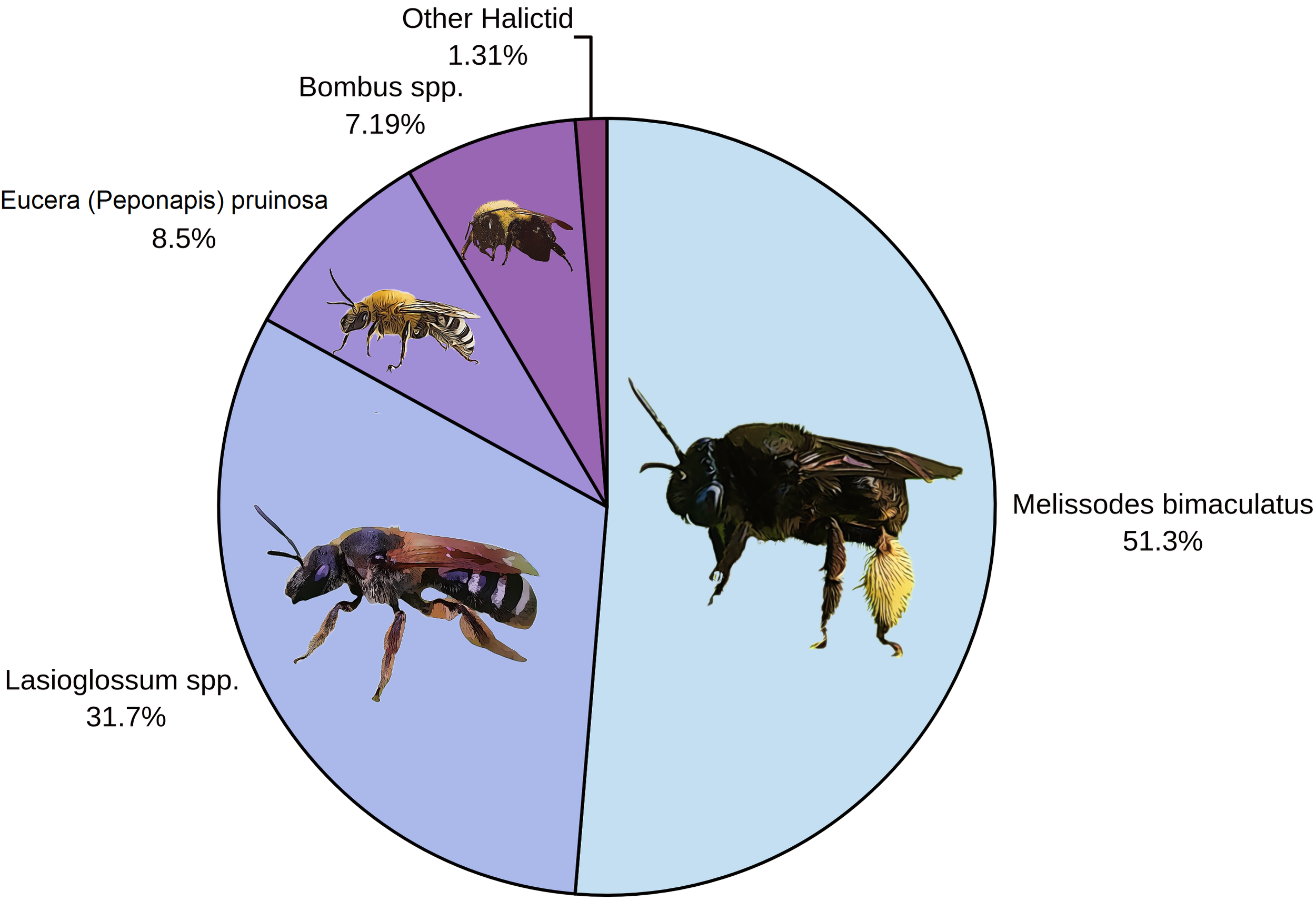Keeping pests in perspective
Pest management practices are often warranted. We deal with a lot of pests in agriculture. But this isn’t always true- sometimes its helpful to take a step back and reevaluate pest management priorities. In watermelon, a number of significant pests threaten watermelon yield, but insecticide applications can also reduce the quality of pollination in the field. In a two year study, we found that bees were really important, especially the wild ones (the ones that we don’t rent). They were actually a much greater predictor of watermelon yield and quality than striped cucumber beetle management.
CLICK HERE FOR THE PDF.
Abstract
Insect pests and pollinators can interact directly and indirectly to affect crop production; however, impacts of these interactions on marketable yield are little known. Thus, the evaluation of interactions between pests and pollinators are needed to best prioritize management efforts. Over 2 years, we evaluated the impact of pollinator visitation and/or beetle (Acalymma vittatum) infestation on fruit set and yield in seedless watermelon production. In 2020, we tested the main effect of pollinator visitation: two or eight honeybee visits, two wild bee visits, hand pollinated and open pollinated. In 2021, we crossed wild and managed pollinator visitation (two or four honeybee visits, two or four wild bee visits, hand pollinated and open pollinated) with varying beetle infestation levels (0, 3, 6 and 9 beetles/plant). In both years, wild bees contributed significantly to high fruit yields, and exclusive visitation from wild bees increased yield by a factor of 1.5–3 compared to honeybees. In 2021, pollination was the only significant factor for fruit set and marketable yield even when compared to the varying beetle infestation levels. These data advocate for a reprioritization of management, to conserve and protect wild bee pollination, which could be more critical than avoiding pest damage for ensuring high yields.
